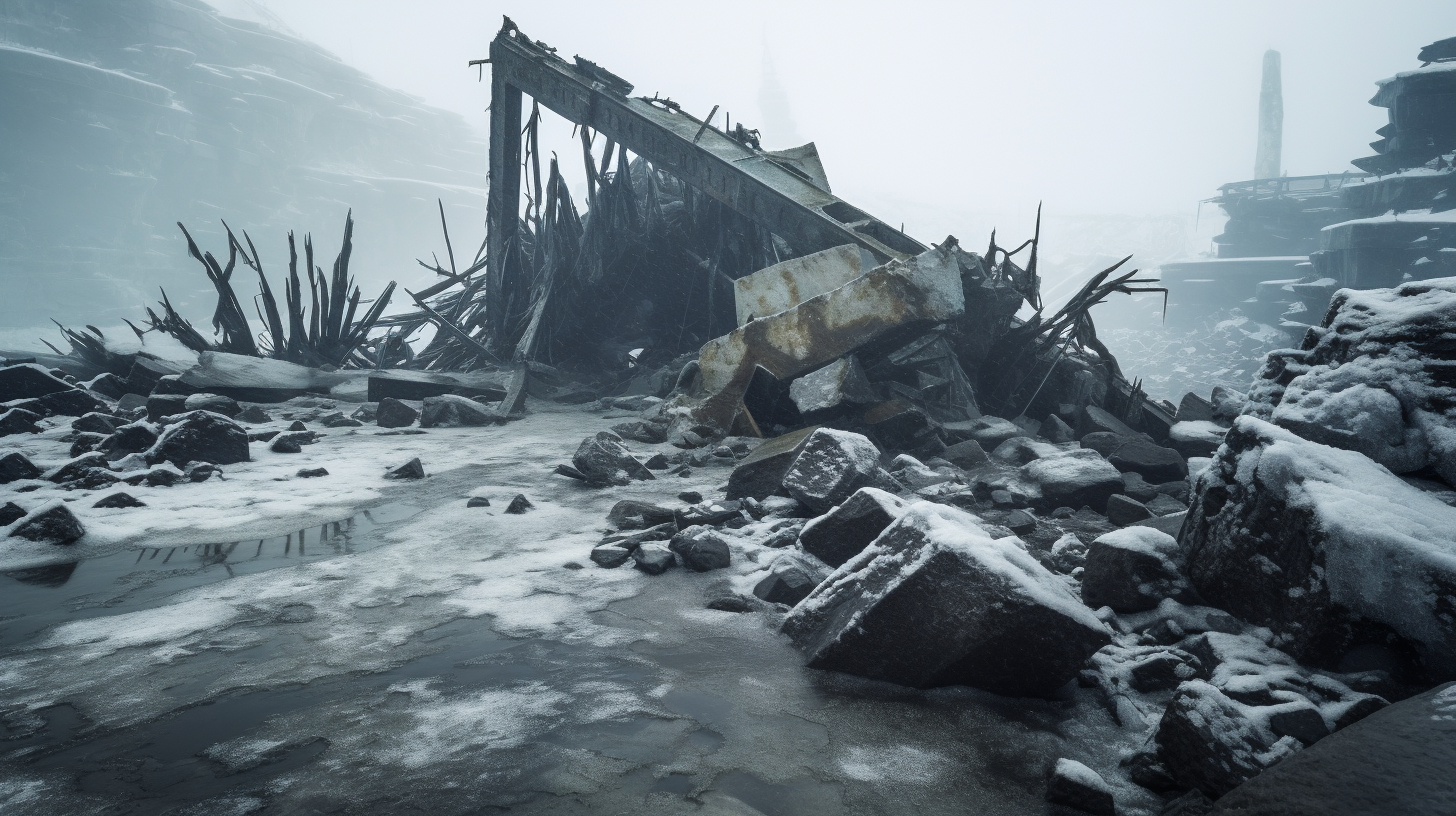In the ever-darkening panorama of our suffering planet, the relentless march of the thaw reaps a bittersweet harvest: from beneath the weeping glaciers and the retreating ice sheets, the relics of bygone eras emerge as testament to histories we never knew.
Imagine witnessing the unearthing of ancient civilizations, the artifacts of the old world. Now, as the frost-laden veil ascends, such visions are morphing from flights of fancy into haunting reality. Alpine snowfields recede to unveil stone-tipped arrows and woolen garb, the ancient belongings of the mountain dwellers. Siberian permafrost secedes, presenting ice-age flora and megafauna, perfectly preserved in nature’s cryonic embrace.
It’s a conundrum of palaeontological proportions, a treasure hunt in the midst of an environmental elegy. The finds range from the majestic — none can forget the awe upon the discovery of an intact woolly mammoth — to the mundane, frozen snapshots of daily life that tell the tale of humanity’s adaptation to our planet’s iciest corners.
The surprise does not end with prehistoric wonders, as contemporary remnants also surface with the thaw. Hidden military outposts from bygone cold wars, emergent from their icy shrouds, remind us of a time when the ice was a battleground, a secretive keeper of the world’s martial machinations. The irony of these discoverings in our era of climatic capitulation is as sharp as the icicle’s point.
Scientists and historians working on ice’s melting edge paint a picture of contradiction. “It’s a race against time,” one archeologist discloses over a crackling satellite connection. “Each artifact we find is a gripping story from the past, but their surfacing is a stark indicator of our climate failures. We’re documenting the history that global warming is laying bare, even as that same warming spells doom for our collective future.”
There is a chilling beauty in the preservation of these relics, a testament to the ice’s ability to keep secrets for millennia, now being compelled to tell all. They whisper to us of ancient struggles, triumphs, and the sheer breadth of the human spirit. But theirs is a story that ends with a cautionary note, resonating clear as glacial meltwater — this encroaching calamity disdains the distinction between past and present, ready to swallow our era’s artifacts for future archaeologists to ponder, should any be left to wonder at our folly.
To study these relics is to walk a diminishing tightrope of wonder and despair. Each piece intricately linked to its environment, a reveal not only of culture and biology but of past climates, ecologies now in upheaval. “It’s a forensic inquiry into Earth’s former climates,” one environmental researcher reflects. “But it’s incredibly sobering to realize that we’re examining the fabric of a climate stability we may never experience again.”
As the last paragraph of this somber discovery is written, our thoughts linger not only on what is emerging but what may soon forever be obscured — not by ice, but by the relentless advance of a poisoned sea, our own inescapable heritage. For while these icy archives relinquish their secrets today, tomorrow they may stand silent, our history entombed in a watery grave. Perhaps one day, some future remnant of civilization will dive into the depths in search of the Lost Anthropocene.
